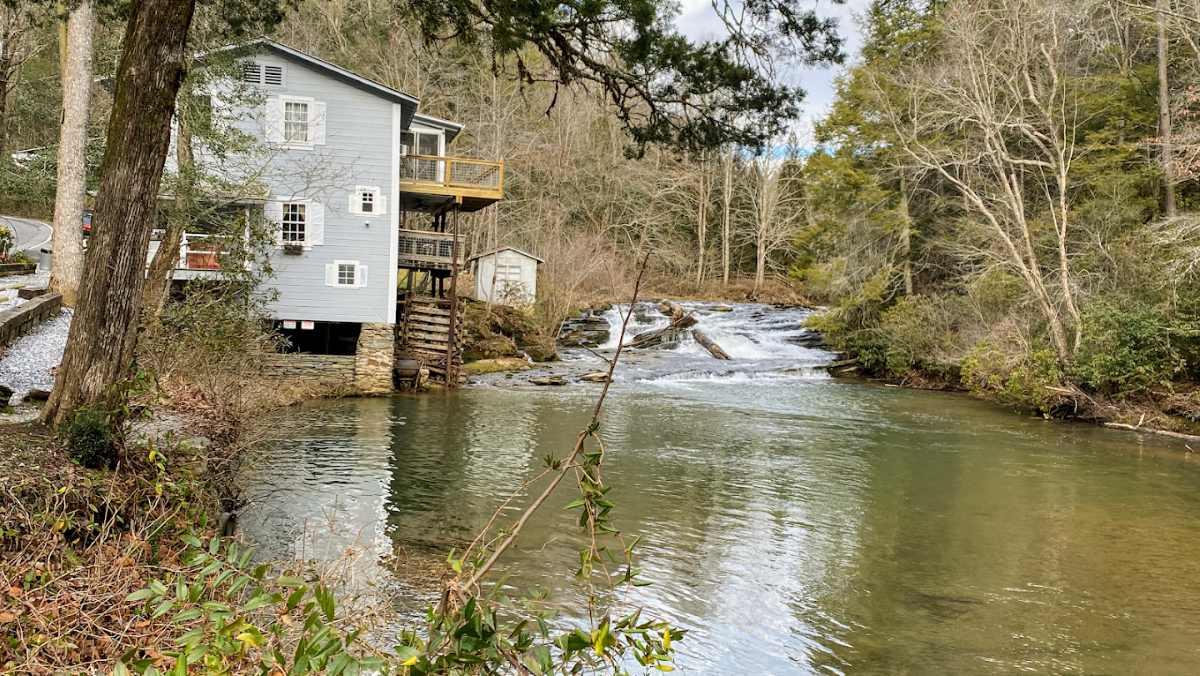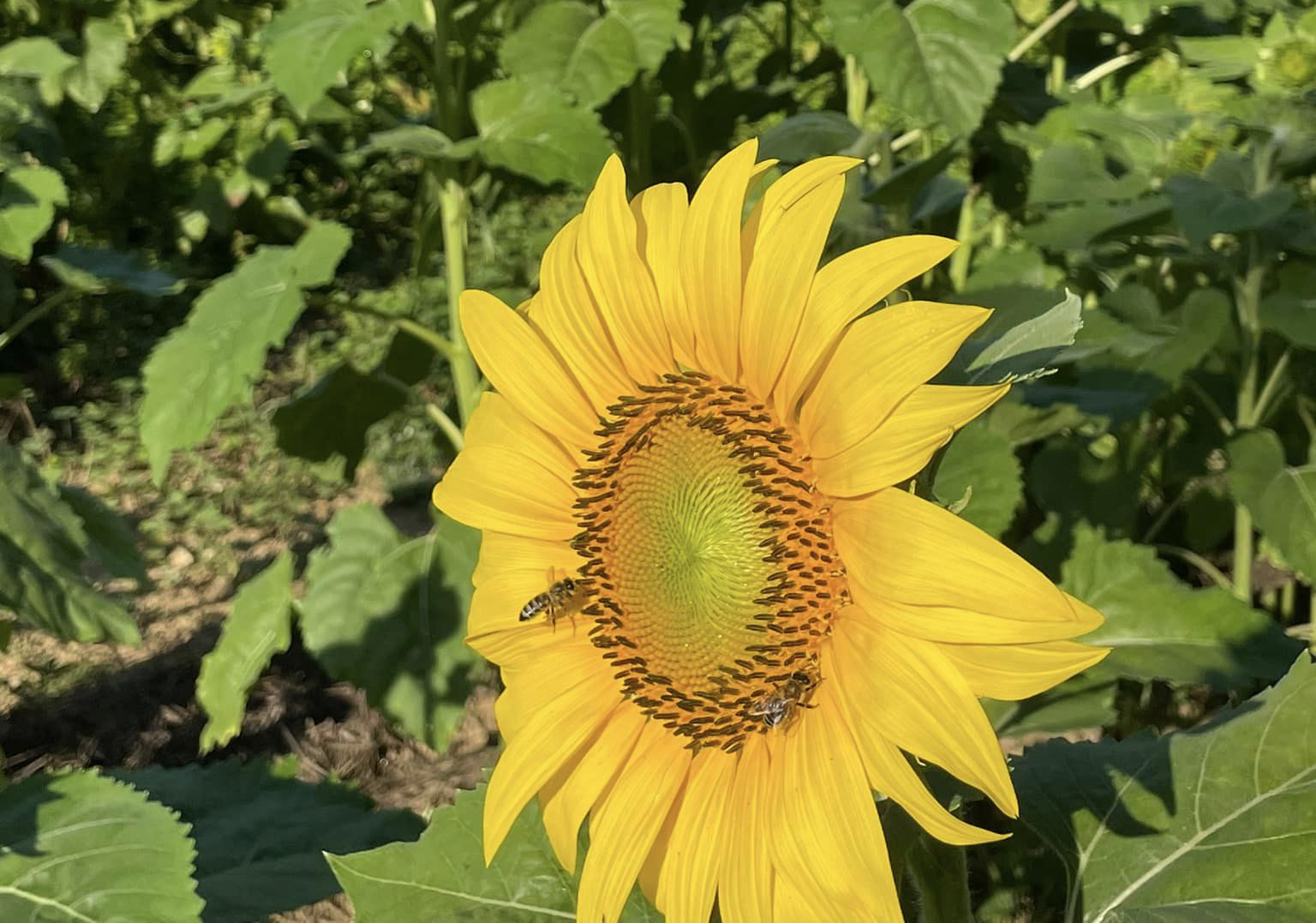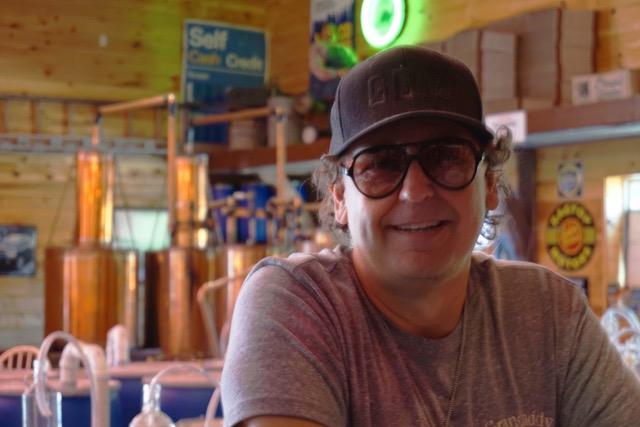
Tommy Townsend has made good along two very different career paths. He is the lead singer of Waymore’s Outlaws, formerly The Waylon Jennings Band. And he’s the owner and operator of Grandaddy Mimm’s Moonshine Distillery, a business based on the recipes of his grandfather Jack “Mimm” McClure, one of the top moonshiners out of the Blue Ridge Mountains of Georgia.
Tommy Townsend
Townsend was already in love with music and performing in his own mirror when, at the age of five, his mother and father arranged for him to meet Waylon Jennings after a concert. That meeting was the beginning of a long-term friendship between the two and later led to Jennings mentoring Townsend as an up-and-coming Country musician.
Townsend moved from Blairsville, Georgia, to Nashville full-time to work his way into the Country Music business. There, he wrote songs, produced demos, and he performed at every opportunity. Eventually, he began to perform with Jennings’ band. After Jennings’ death, the band invited Townsend to step in as the lead singer. The rest, as they say, is history.
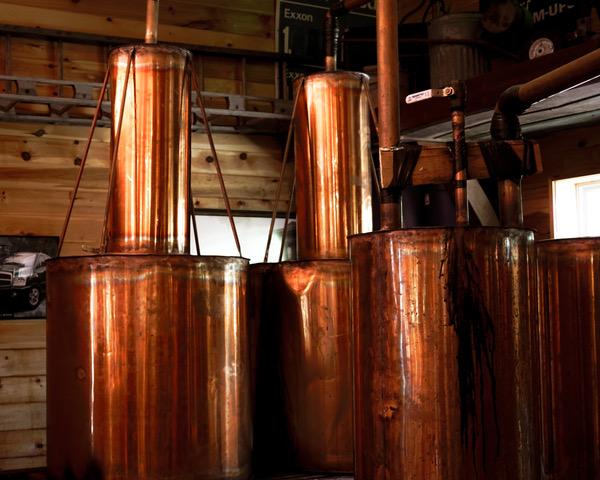
It was a casual conversation with a friend after a concert in Texas that got Townsend considering how to use his grandfather’s old moonshine recipes. Townsend began to explore distributors and distillers and jumped into the business when selling moonshine became legal. Named after his grandfather, Grandaddy Mimm’s Moonshine has already outgrown its first location and has recently relocated to a larger space on the square in the town of Blairsville, Georgia.
In fact, the business has thrived, especially during the COVID-19 pandemic. Townsend has seen a 48% increase in business during that time. He prides himself on the exact replication of his grandfather’s product. The one difference between the two distillers is that his grandfather used woodburning fires while Townsend uses gas.
Grandaddy Mimms
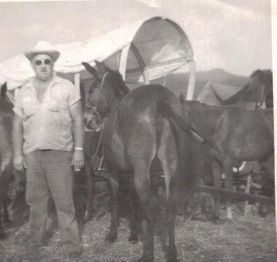
Jack “Mimm” McClure was a legend in Towns county. He’s been described as a bear of a man who weighed about 250 pounds, wore a Stetson hat, and never buttoned his shirt all the way, even in winter. Former Governor Zell Miller, who grew up in Young Harris, described Mimm as “loved, hated, respected, and feared, depending upon the experience one had with him.” Miller’s relationship with Mimm was close––Mimm was the first to give money to support Miller’s entry into politics.
Mimm was known for his philanthropy in the area. He frequently left bags of groceries on the doorsteps of the hungry. He also set up an account at the local dry goods store in Hiawassee and instructed the staff to take care of those who came in with needs and no money. Mimm took care of the bill each month. Mimm also provided firewood for schools in the winter, gave money to the local churches, and provided food and Christmas presents each year to the poor.
Mimm made his money through moonshine sales, employing people throughout the county to run stills for him. He sold the bootleg moonshine out of the back of his beer joint called the Border Hop. He had illegal slot machines in the back as well.
Mimm was never caught for his illegal activity, mostly because many of the local police and revenuers bought moonshine from him. However, Townsend remembers stories his uncle told of times when the family would suddenly pack their things to go on an impromptu camping trip. The children didn’t know at the time that the family was on the run.
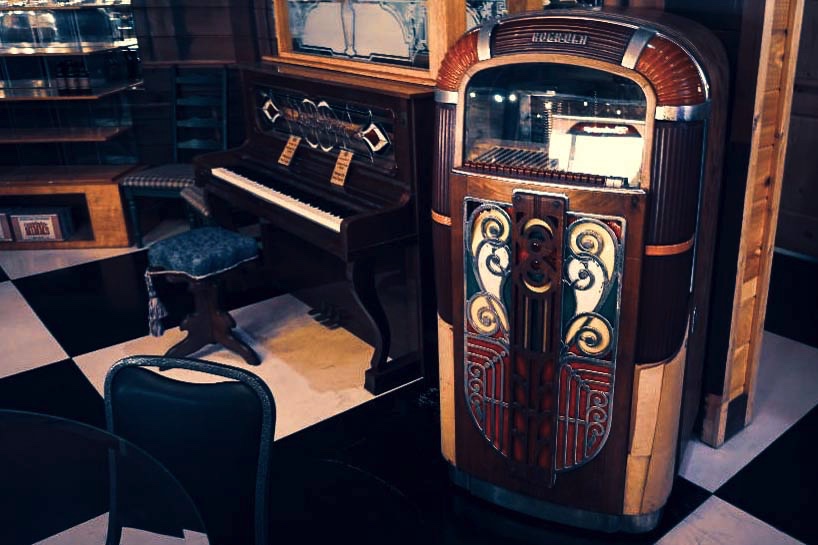
Mimm was known for the quality of his product as well as for all he did for the community. The two stills in operation––legally now––at Grandaddy Mimm’s Moonshine Distillery were hand made to Mimms’ specifications, using 100% copper sheeting just as Mimm used. A trip to the Grandaddy Mimms’ Distillery offers the opportunity to take a short tour of the process and taste test the product for $5.00 a person. The process and the recipe are the same as Mimms used.
The complicated history of moonshine
The history of moonshine in Georgia is complicated, and public opinion of it has changed several times over the centuries. That era is now over, but the history and folklore of the time are intriguing.
Georgians began making home-brewed liquor in the late eighteenth century, using skills that had been brought over from Northern Ireland. While liquor was made throughout the state, farmers in the Appalachian area embraced the process as a way of providing income in an extremely poor area of the state. These distillers were respected members of the community. In their support of the liquor distillers, the community denounced the federal taxes imposed on liquor sales in the 1790s.
During the Civil War, the government needed to raise funds by charging tax on luxury items like tobacco and liquor to balance the budget that was heavy with war expenses. The IRS was created to collect these taxes. After the Civil War was over, soldiers who returned to Georgia and tried to pick up their home-brewed liquor businesses were required to pay these extra taxes. Some chose to stop making liquor rather than pay the taxes. Others chose to take their operations into the woods and worked their stills at night. The term “moonshiners” was born out of these illegal activities.
IRS agents, known as revenuers, were sent into the area to enforce these liquor tax laws. However, the many deep valleys and the abundance of water provided the perfect environment for moonshiners to operate out of sight. The efforts of the revenuers to collect taxes against the efforts of the moonshiners to continue to operate their businesses tax-free led to an all-out war between the two groups. Moonshiners attacked revenuers and threatened locals to keep them from sharing information with the revenuers. Revenuers destroyed stills and gallons of moonshine, and moonshiners who were caught were jailed. In the early 1870s, the Ku Klux Klan joined with the moonshiners against the revenuers, adding to the revenuers’ aggressive response. During this time, possibly as many as 80% of federal law enforcement cases in the Georgia mountains were based on illegal liquor sales.
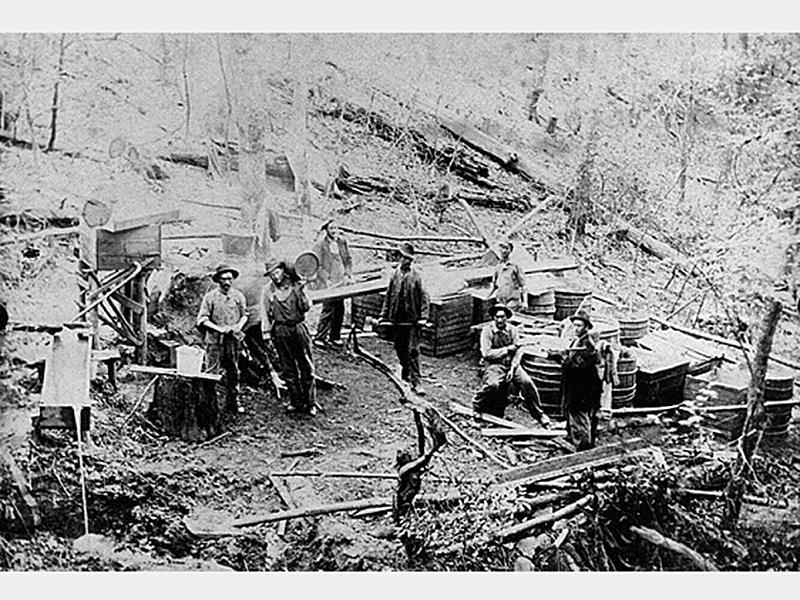
As this private war evolved, public opinion began to move from supporting the moonshiners to the revenuers. The public was shocked by the aggressive actions moonshiners took against the revenuers. As the temperance movement got started in the 1880s, moonshiners were described, not as people trying to make a living, but as violent criminals. By the end of the century, most residents no longer supported the moonshiners or their illegal activities.
By the early 1900s, many moonshiners had lost the art of making quality liquor and used short cuts to produce extra profits. When prohibition laws were passed in 1919 that shut down the legal manufacturing of all alcohol, the demand for moonshine increased, opening room for gangsters to get into the business. The need to deliver thousands of gallons of moonshine to other parts of the state and even beyond the state’s borders created a new need––fast transportation and skilled drivers who could evade revenuers and police officers. For the next thirty years or so, creating and selling moonshine became a race between the moonshiners, their drivers, and the revenuers.
NASCAR and moonshine
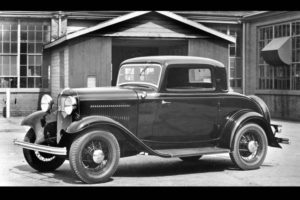
In 1955, Junior Johnson was the new star on the NASCAR circuit and had victories. When he wasn’t racing for NASCAR, Johnson was back in North Carolina, running moonshine deliveries. He actually started driving moonshine as a teenager. In an interview, Johnson explained, “Moonshining was part of my growing up, but it was also part of my training in auto racing. Being in that business, you had to have a very fast car, and you had to be able to outrun the revenuers or highway patrol or sheriff or whoever tried to pursue you to try and apprehend you.”
Many of the early racers in the NASCAR circuit trained as a racer making moonshine runs. Eventually, they seemed to agree that the 1940s Ford with a V-8 was the best for their profession. Author Neal Thompson explains, “It was fast enough to stay one step ahead of the law, rugged enough for the mountain roads and had a big enough trunk and back seat to squeeze in moonshine.”
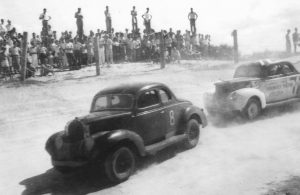
During the 1930s, moonshine drivers began to meet at county fairs to race each other. They found thousands of people wanted to watch and were willing to pay for the privilege. Author Daniel S. Pierce explains that at that time, most of “the early mechanics, car owners, promoters, and track owners had deep ties to the illegal alcohol business.” Soon after, a formal racing team was established, and bigger races were set up. The first big stock car race was in Atlanta in 1938. In 1947, top stock car drivers, auto mechanics, and car owners gathered in Daytona Beach to develop rules for stock car racing. That meeting was the official beginning of NASCAR.
NASCAR has embraced its moonshining roots and now has a bootlegging exhibit and moonshine still built by Junior Johnson in its Hall of Fame.
Visit Grandaddy Mimm’s Moonshine Distillery, Blairsville
Grandaddy Mimm’s Moonshine is in the process of relocating to their new facility at 112 Wellborn Street in Blairsville, Georgia. They’ll reopen at the new site before Thanksgiving. Grandaddy Mimm’s will be open Monday through Saturday from 11 am to 6 pm.
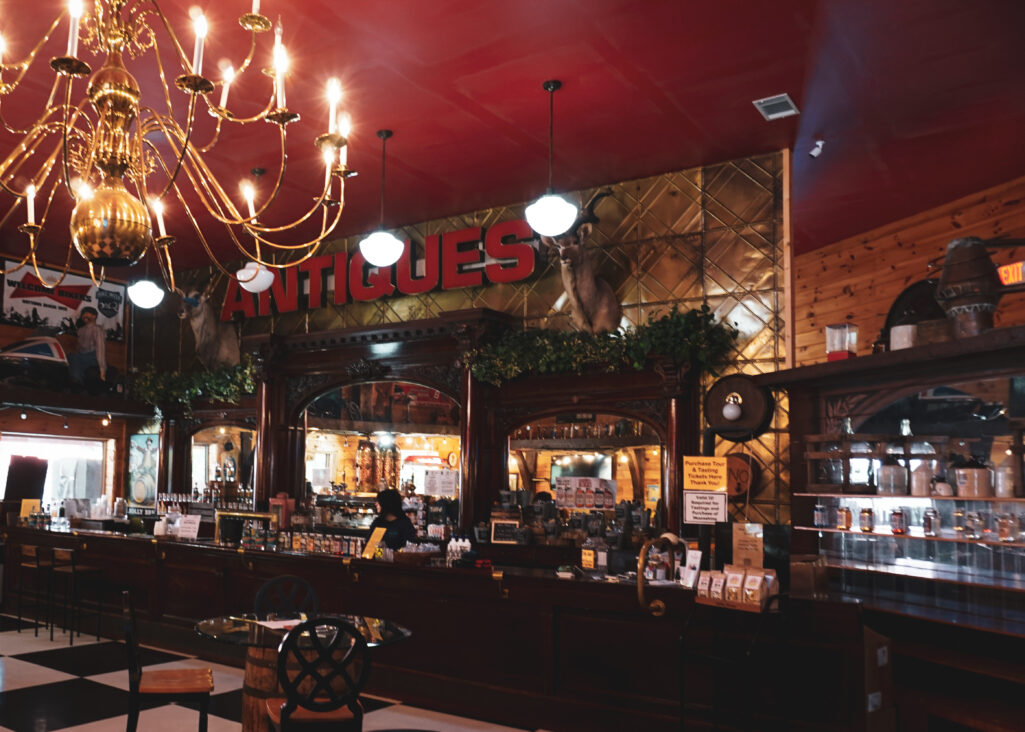
Besides getting to see the operation and tasting the moonshine, Mimm’s has a small historical museum that displays some of Grandaddy Mimm’s possessions, photos, and other memorabilia. Also displayed are memorabilia of Tommy Townsend and Waylon Jennings.


